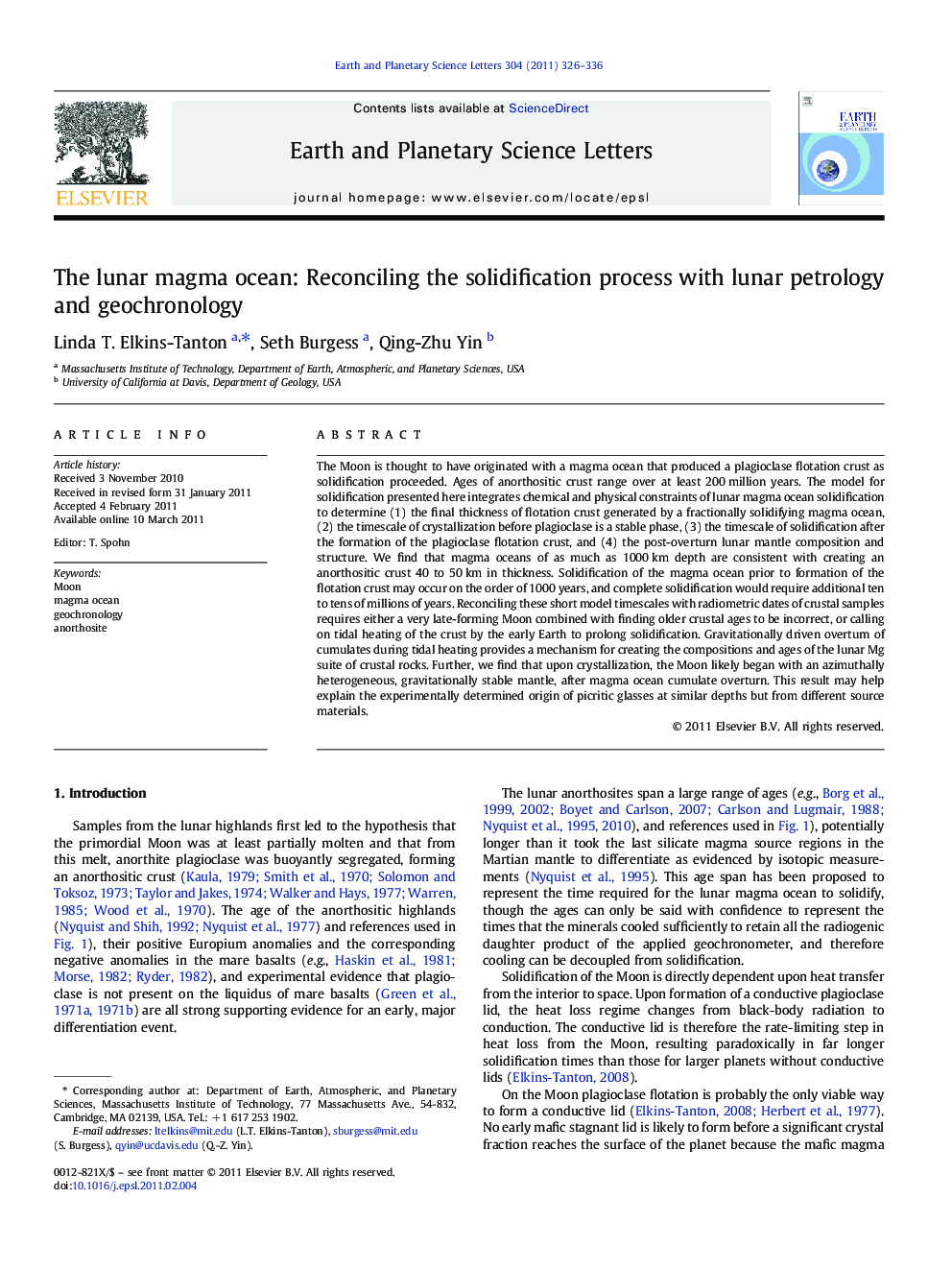| کد مقاله | کد نشریه | سال انتشار | مقاله انگلیسی | نسخه تمام متن |
|---|---|---|---|---|
| 4678119 | 1634831 | 2011 | 11 صفحه PDF | دانلود رایگان |

The Moon is thought to have originated with a magma ocean that produced a plagioclase flotation crust as solidification proceeded. Ages of anorthositic crust range over at least 200 million years. The model for solidification presented here integrates chemical and physical constraints of lunar magma ocean solidification to determine (1) the final thickness of flotation crust generated by a fractionally solidifying magma ocean, (2) the timescale of crystallization before plagioclase is a stable phase, (3) the timescale of solidification after the formation of the plagioclase flotation crust, and (4) the post-overturn lunar mantle composition and structure. We find that magma oceans of as much as 1000 km depth are consistent with creating an anorthositic crust 40 to 50 km in thickness. Solidification of the magma ocean prior to formation of the flotation crust may occur on the order of 1000 years, and complete solidification would require additional ten to tens of millions of years. Reconciling these short model timescales with radiometric dates of crustal samples requires either a very late-forming Moon combined with finding older crustal ages to be incorrect, or calling on tidal heating of the crust by the early Earth to prolong solidification. Gravitationally driven overturn of cumulates during tidal heating provides a mechanism for creating the compositions and ages of the lunar Mg suite of crustal rocks. Further, we find that upon crystallization, the Moon likely began with an azimuthally heterogeneous, gravitationally stable mantle, after magma ocean cumulate overturn. This result may help explain the experimentally determined origin of picritic glasses at similar depths but from different source materials.
Research Highlights
► Tidal heating is required to reconcile lunar solidification with crustal ages.
► Magma ocean cumulate overturn creates a laterally heterogeneous lunar mantle.
► A laterally heterogeneous mantle may explain the source regions of the picritic glasses.
► Magma ocean cumulate overturn can produce and emplace the high-Mg suite.
Journal: Earth and Planetary Science Letters - Volume 304, Issues 3–4, 15 April 2011, Pages 326–336